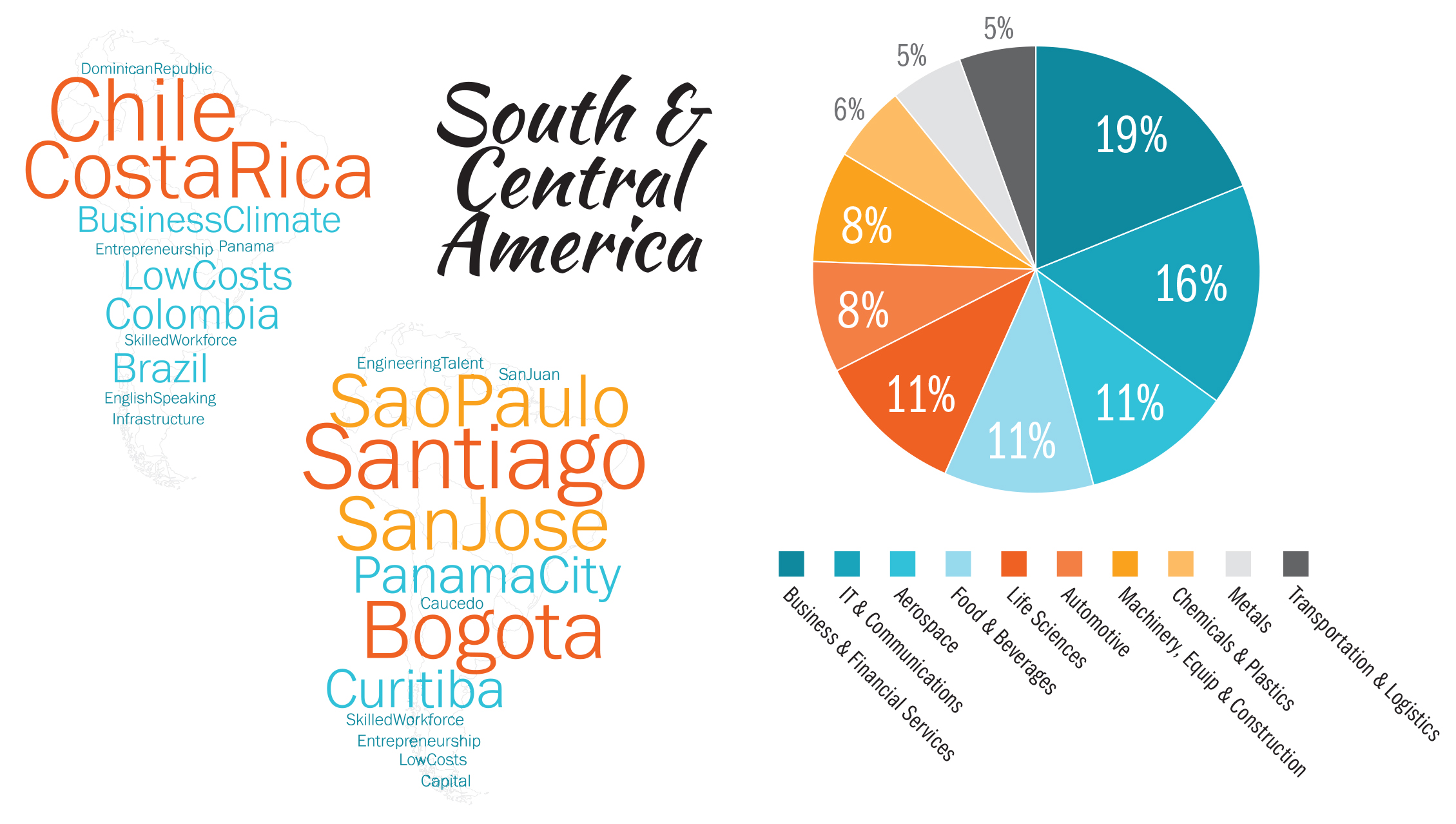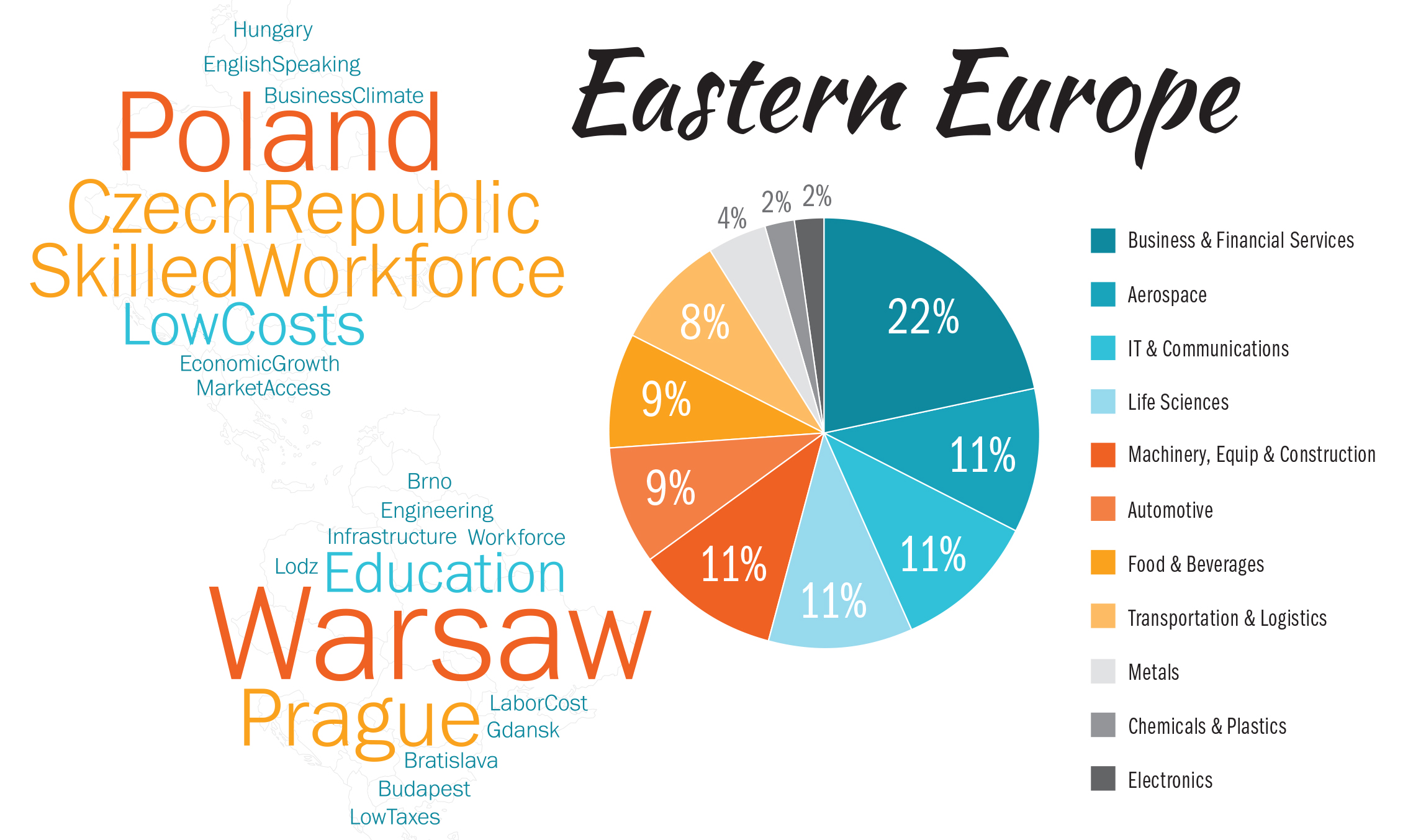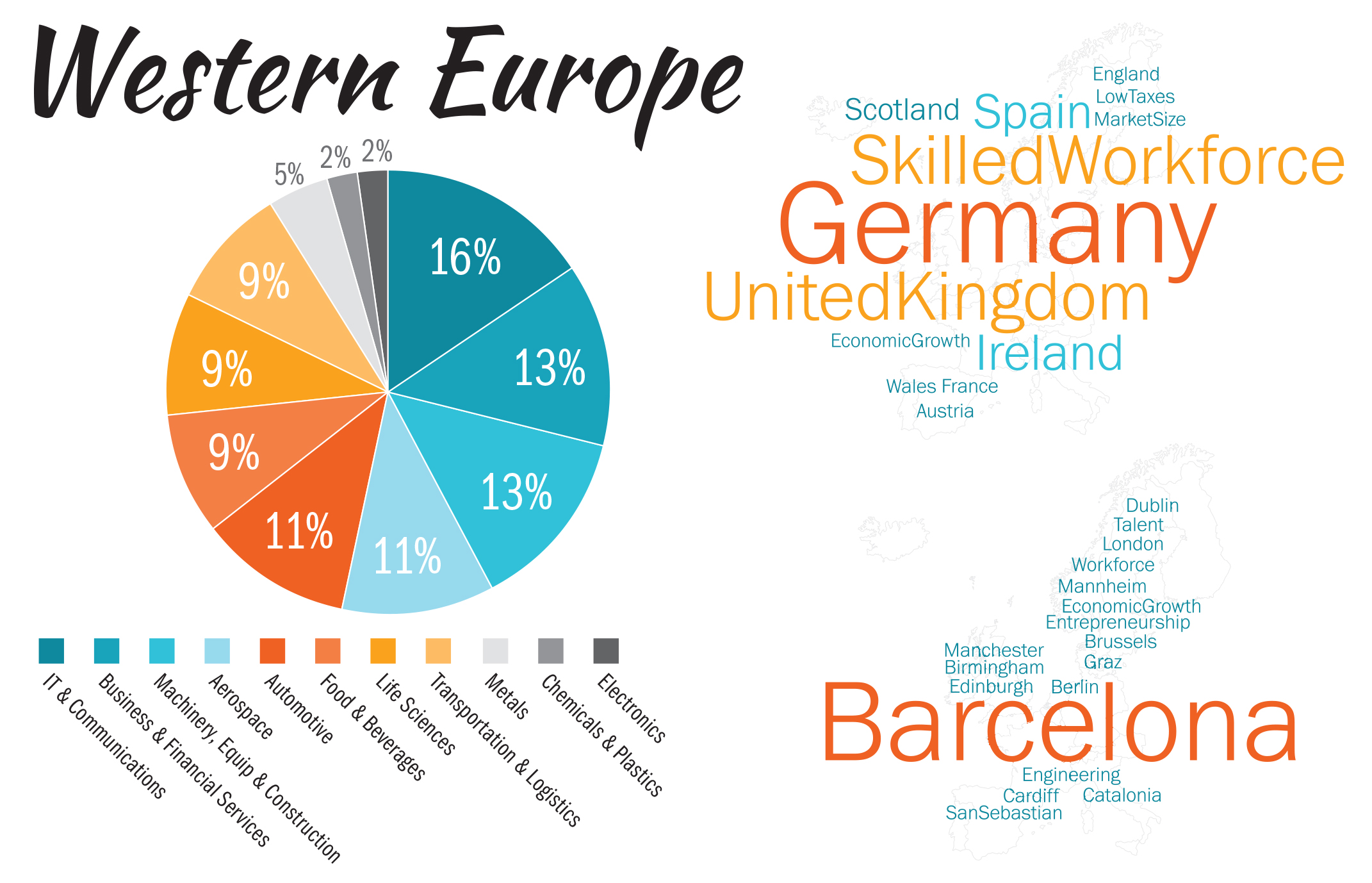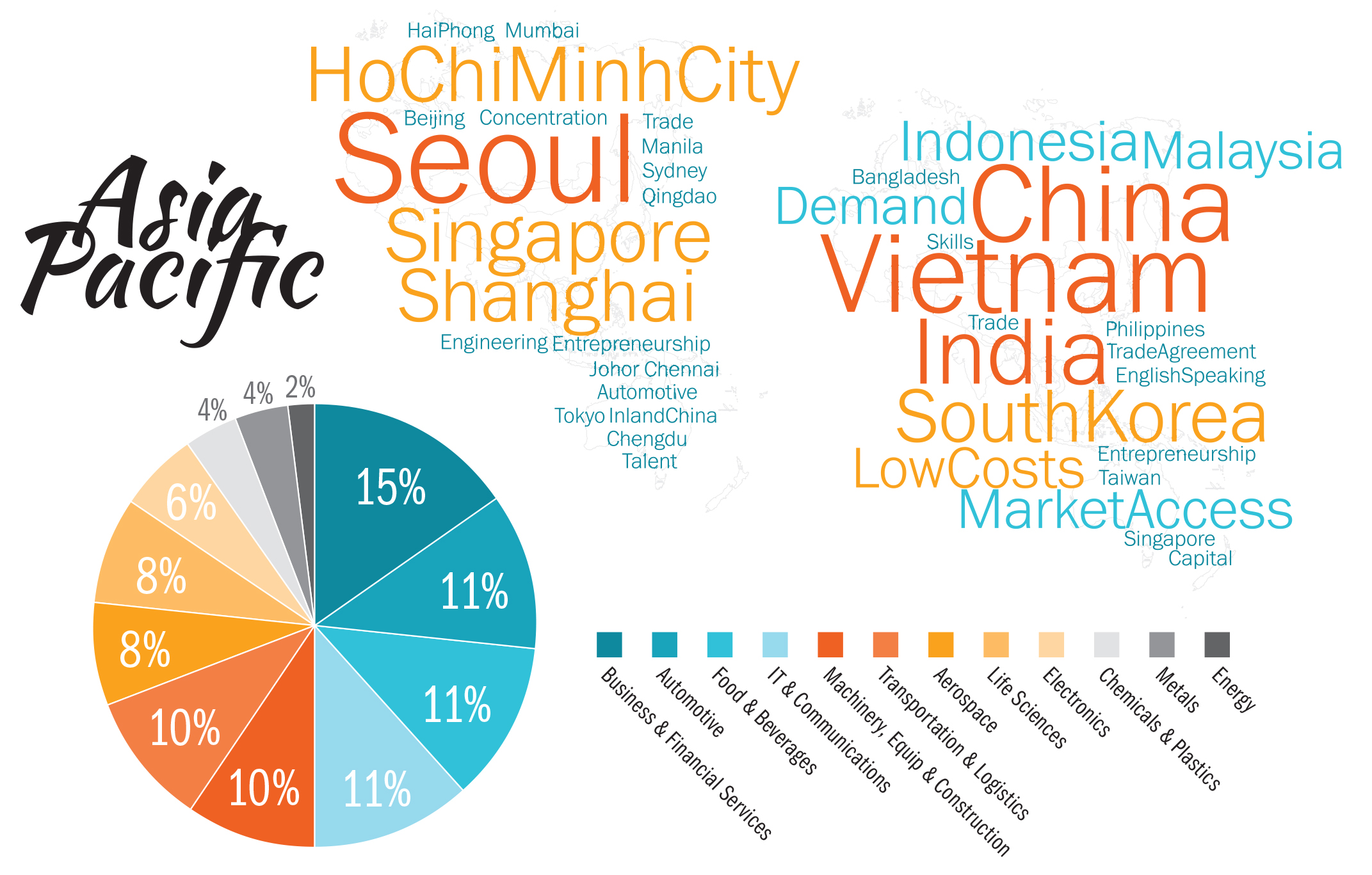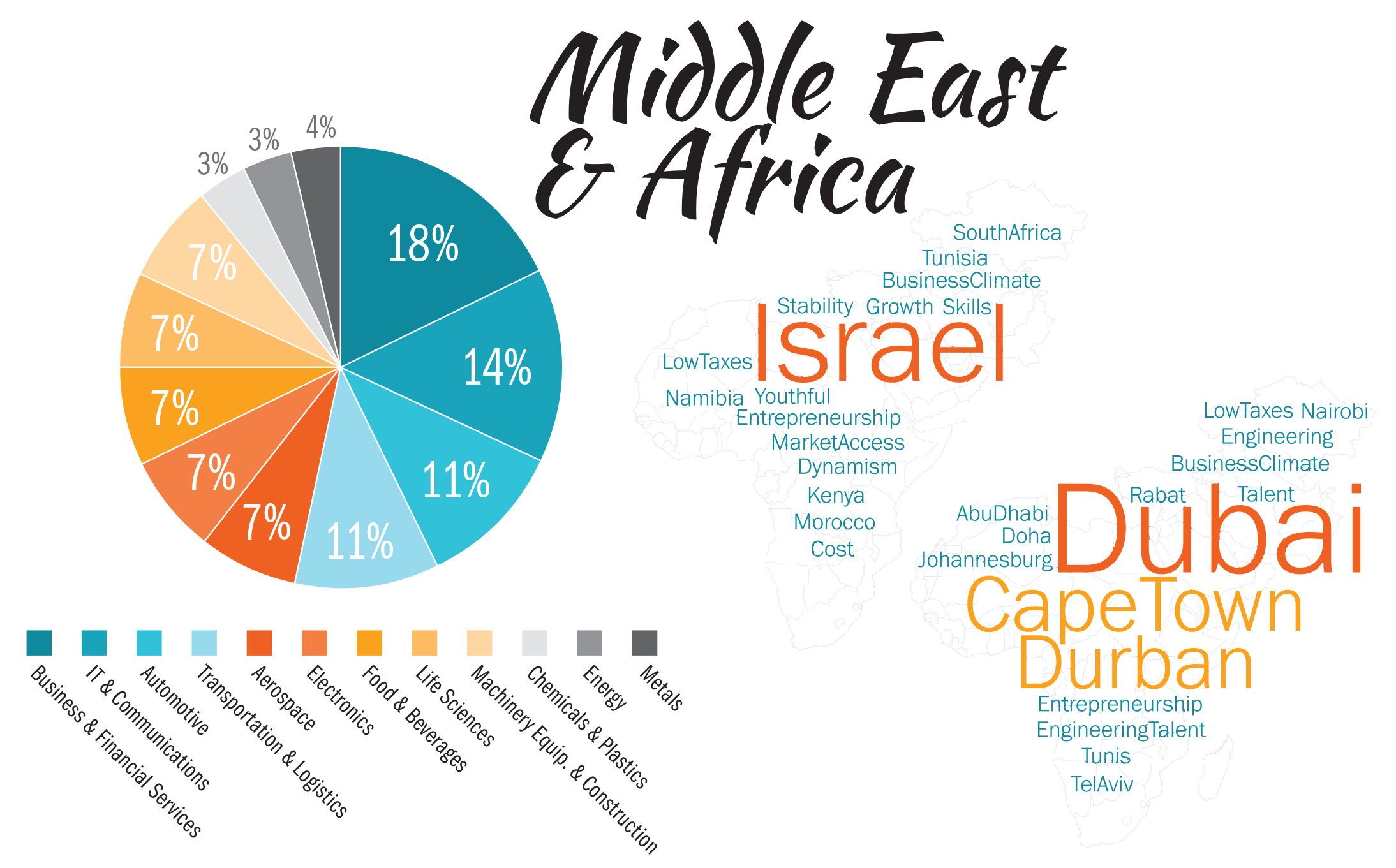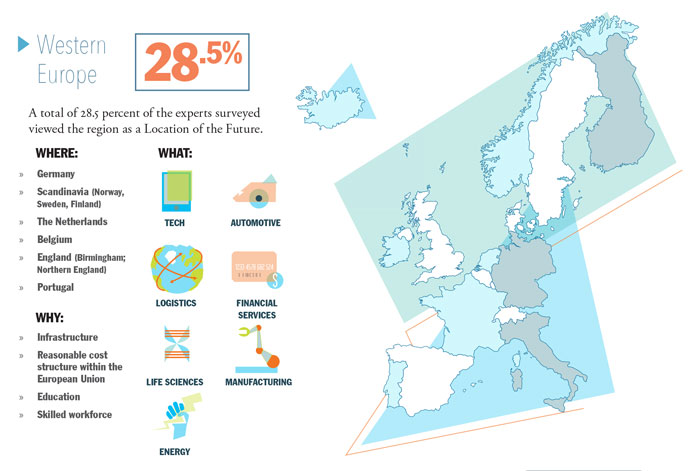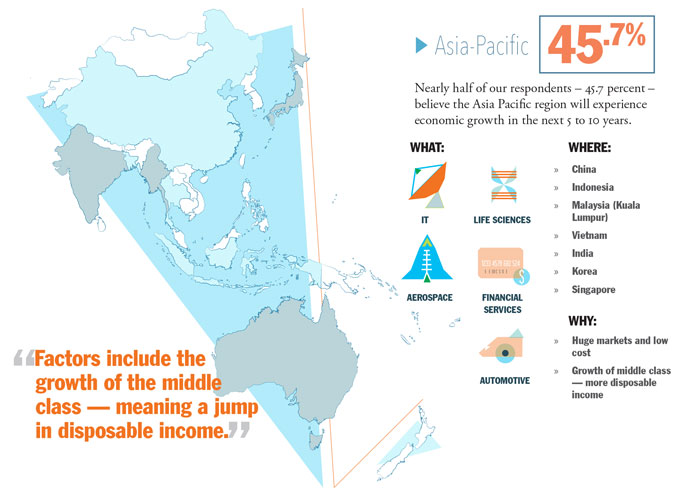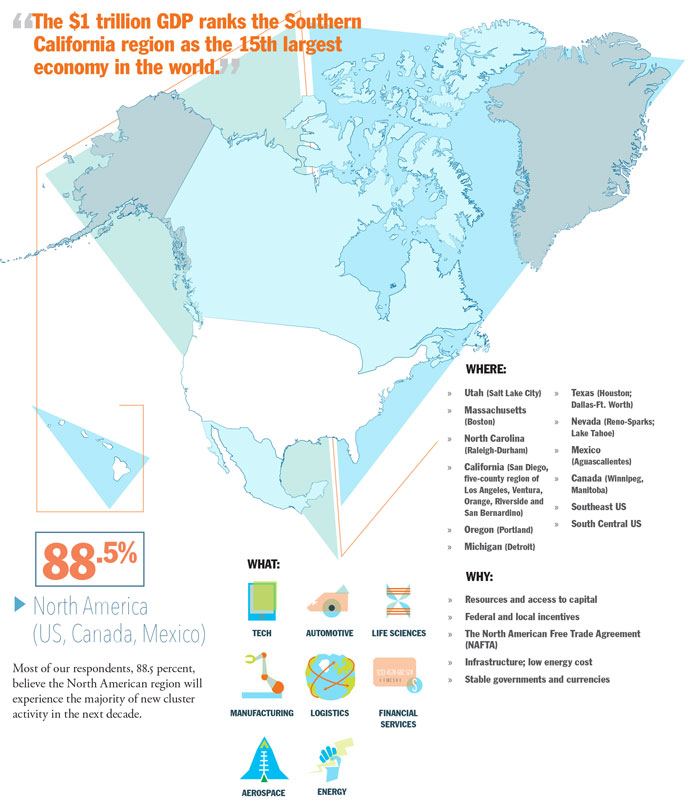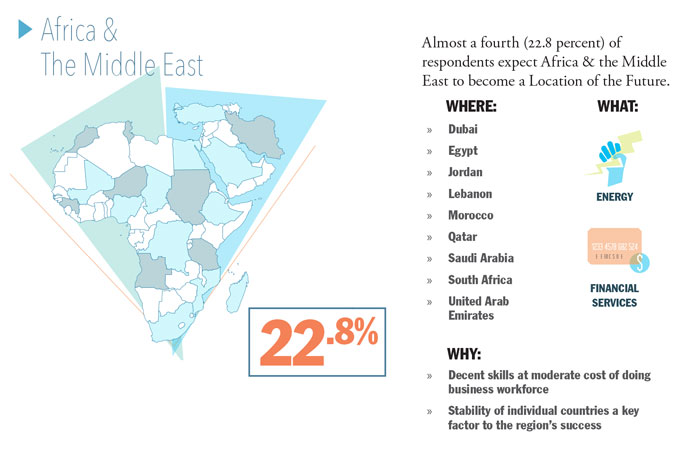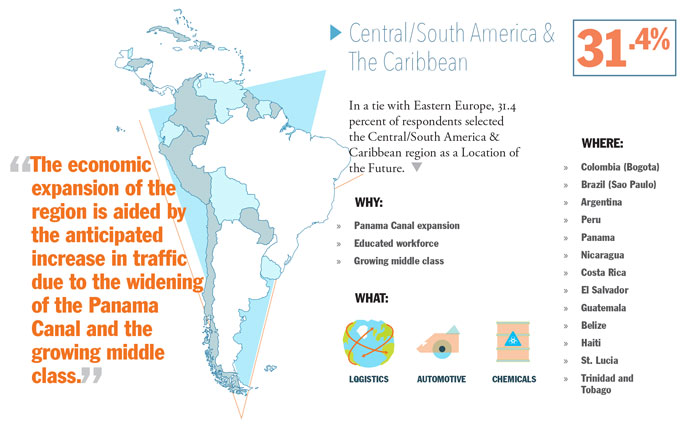Which countries and metros deserve a “Location of the Future” designation is highly subjective. It depends on what your company does, where it needs to operate and what you consider to be the leading site criteria. This exercise is meant simply to depict, in the word clouds, which countries and cities were referenced most often in a recent survey of site selectors who were asked where they were most likely to invest in the next five years in a given world region. Non-location terms in the clouds are included according to the frequency with which they were mentioned by the respondents as factors they associate with those countries and metros.
The survey, conducted in the spring, also asked in which industry sectors they were most likely to invest in the locations they favored. The pie charts show where the action will be in each region, which reflects what those locations are clearly good at. They likely are already clusters for those sectors, or they may soon be. This exercise isn’t scientific, but it points to the locations on the minds of your peers.

